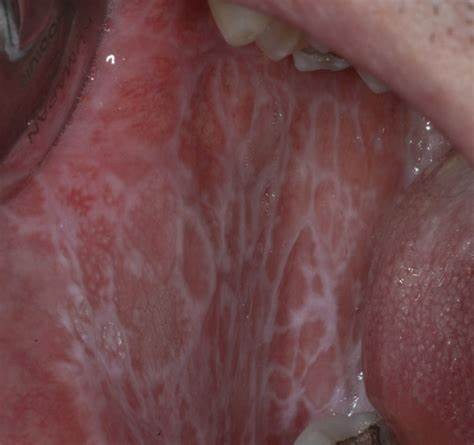
Oral Lichen Planus
Introduction
Erasmus Wilson described Lichen planus in 1869. The lesion of the lichen planus looks like flat lichen on the rock, planus stands for flat. Therefore it is named lichen planus. It is a pre-cancerous condition that involves oral mucosa. The disease can also involve mucosa, hair, and nails. Lichen planus is an inflammatory disease of the skin and oral mucosa. It is a common dermatological disorder that occurs due to an immune response, genetic factors, infection, and tobacco chewing habits. The prevalence of oral lichen planus is between 0.1 % to 2.2 %.
What Is Oral Lichen Planus?
Oral lichen planus is a common dermatological disease involving oral mucosa. Buccal mucosa (84 %) is the common site involved in oral lichen planus. It also involves the tongue, lips, gingiva, the floor of the mouth, and palate to a lesser extent. There are different types of oral lichen planus.
What Causes Oral Lichen Planus?
Oral lichen planus is caused due to immune response. The following are the causes of oral lichen planus:
- Immune Response - Oral lichen planus is a cell-mediated immune response resulting in the degeneration of cells.
- Immunodeficiency - The role of immunodeficiency is questionable. There has been a report of decreased IgG, IgA, or IgM serum levels in lichen planus.
- Genetic Factors - Lichenplanus are reported in people with a genetic lichen planus family history.
- Infection - Spirochetes and rod-like bodies resembling bacteria has detected in patients with lichen planus.
- Habits - The lichen planus has been reported in the tobacco chewer. Smoking plays a role in initiating oral lichen planus.
- Psychogenic Factor - Lichen planus is linked with stress, emotional upset, overwork, and mental strain.
What Are the Symptoms of Oral Lichen Planus?
- Patients experience a burning sensation in the oral mucosa.
- The lesion is present in the buccal mucosa, tongue, lips, gingiva, and floor of the mouth.
- White raised dots are present in the mouth.
- Swelling in gums.
- Patients experience discomfort while eating, swallowing, chewing, and speaking.
- Severe pain while eating spicy foods.
- Patients feel irritation while brushing.
- Weight loss.
- Gingivitis (inflammation of the gums).
How to Diagnose Oral Lichen Planus?
Lichen planus can be diagnosed by:
- Clinical Diagnosis - The presence of white dots or lines in buccal mucosa confirms lichen Planus.
- Laboratory Diagnosis - Biopsy shows edema and bacterial bodies in affected cells, confirming lichen planus.
- Immunofluorescent Study - It is positive for direct immunofluorescence reaction with IgA, IgM, and IgG antisera.
What Is the Treatment of Oral Lichen Planus?
- The resolution of the lesion can occur by removing the cause. The causative factor is diagnosed and removed.
- Steroids are given for modulating inflammation and immune response.
- Beclomethasone spray and Triamcinolone acetonide in a gel or cream base can treat the small painful lesions of lichen planus.
- Topical application of Fluocinolone acetonide for four weeks also helps to cure the disease.
Conclusion
Oral lichen planus can be cured by proper medical intervention. A regular dentist appointment is important to prevent disease severity. In addition, smoking cessation and stopping tobacco chewing are recommended to prevent disease progression.
- For more information, you can consult me at iCliniq.com
- If you have any queries, please ask here: https://www.icliniq.com/ask-a-doctor-online